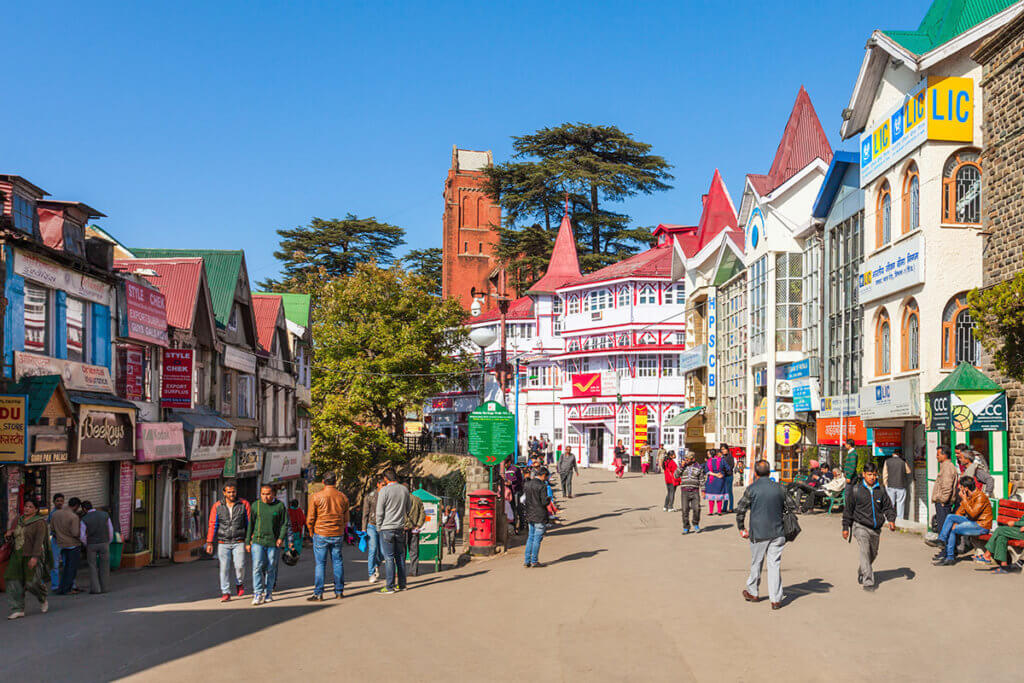For generations during scorching Indian summers, tourists have been flocking to Shimla – a hill station retreat with charming colonial architecture and views of snow-capped Himalayan peaks.
Now, however, Shimla’s locals are begging tourists – the lifeblood of its economy – to stay away from their town in the midst of an acute water shortage.
Many of the town’s nearly 200,000 residents have been without water for more than a week, forced to stand with plastic buckets in long water lines along its famed Mall Road – where shops and restaurants are normally crowded with visitors this year. Tempers have frayed, and parched and angry residents marched on the home of the state’s chief minister.
Now they’ve taken to social media to ask tourists to stay away – at the beginning of high season – so that their city can recover.
“Stop visiting Shimla!” a message that went viral on social media exhorted this week. “The residents are barely getting water to drink, and at a few places, sewage water is being supplied to the houses. And it’ll only get worse as tourists throng to the place in large numbers during June.”
City officials – who have blamed the shortages in part on a dry winter – have already canceled a prominent festival planned for the first part of June and hotels have been busy sending WhatsApp messages to incoming guests asking them to put off their holiday plans, according to the Indian Express.
“There is no water. Please don’t come,” a leading hotelier wrote, the newspaper said.
India’s rapidly depleting water resources are among the most stressed in the world, with rivers running dry, ground water supplies running out and more than 600 million of the country’s 1.3 billion residents at risk of disruptions in their surface water supply, according to the World Resources Institute.
Scientists at New Delhi’s Center for Science and Environment have argued that after Cape Town – which is facing a possible “Day Zero” for the end of its tap water supply next year – one of the next big cities most at risk is India’s tech hub of Bangalore, where the paving-over of lakes and other development has decimated the water supply.
On Tuesday, the Hindustan Times argued in an editorial that the government has failed to address the growing crisis in Shimla and called it “a warning for India.”
“There is no attempt at the central or state levels to manage water quantity and quality, a lack of implementation of existing laws and regulations, pervasive corruption, poor adoption rates of technologies such as desalination plants, no charges on water usage and huge distribution losses,” according to the newspaper’s editorial. “India will have to get its act together on urban water. Otherwise, Shimla-like incidents will recur across the country.”
More than 100,000 tourists visit Shimla each summer, and the water requirement swells to 45 million liters per day, officials said. The city has had less than half that supply in recent days. Experts said that a variety of reasons contributed to the shortage, including a dry winter, contamination of a nearby river and aging, leaky pipes that date to the days when the hill town was the summer capital of the British Raj.
On Tuesday, the high court of Himachal Pradesh ordered a temporary halt to construction activities and car-washing and decreed that municipal tankers will not supply individuals in “VIP areas,” according to the Indian Express, including homes of top bureaucrats, police and businesses. Shimla’s residents were angry that these VIP neighborhoods had ample water while their taps were dry.
(c) 2018, The Washington Post
